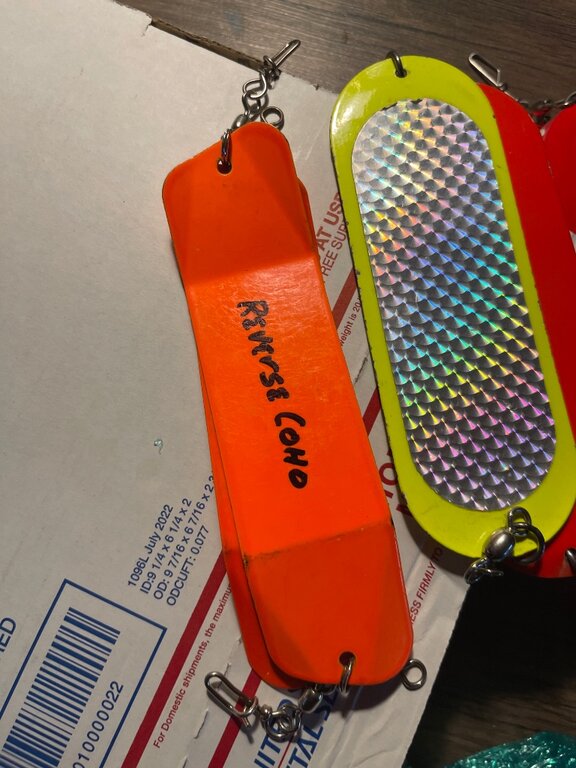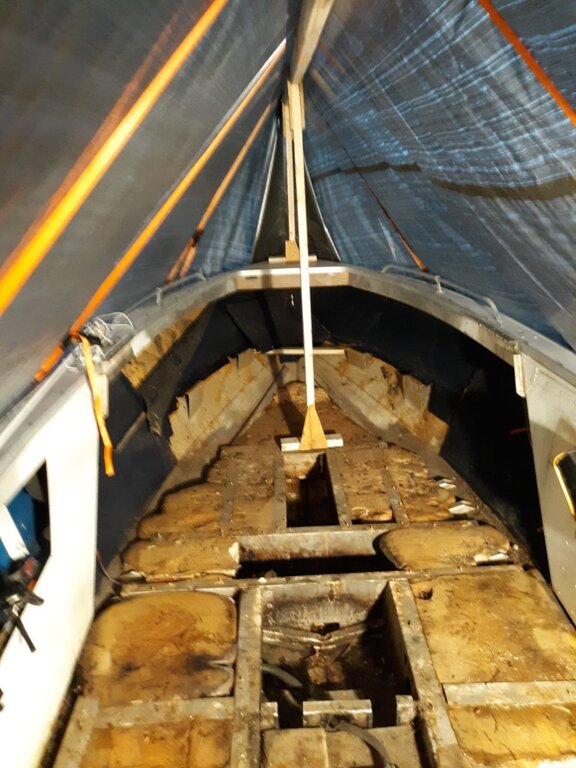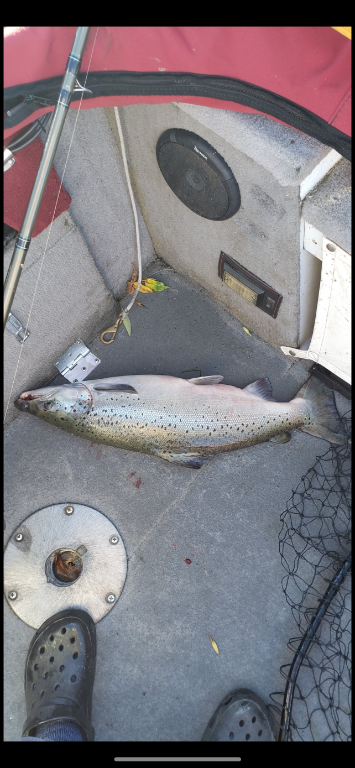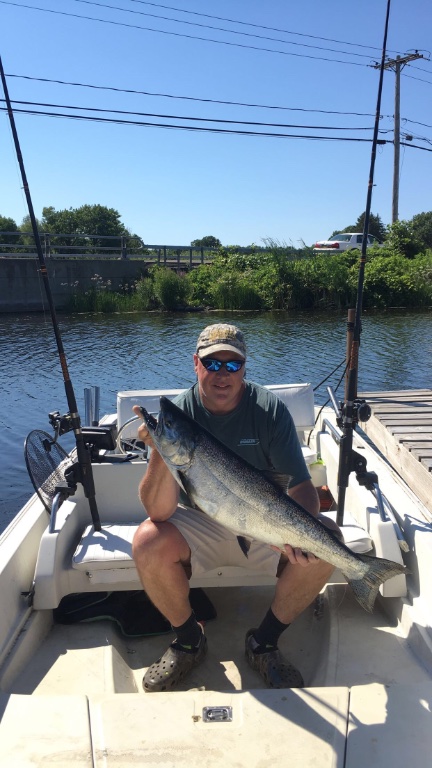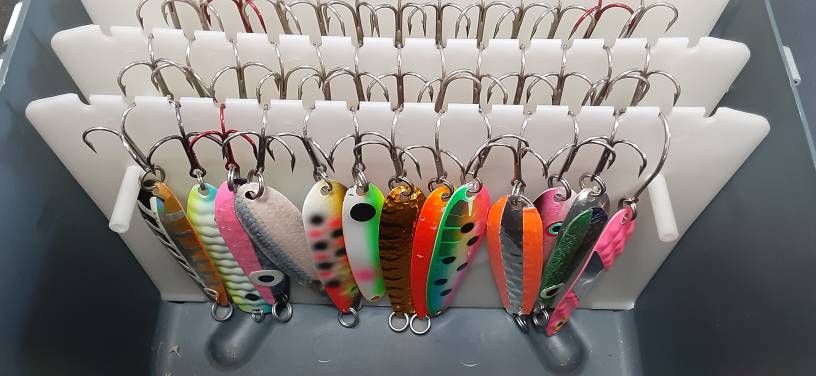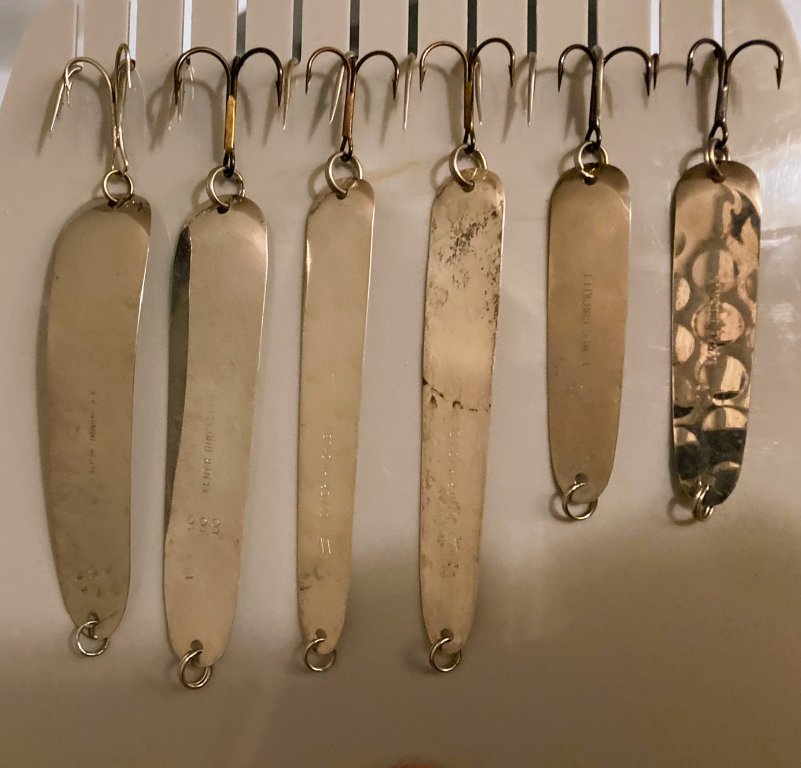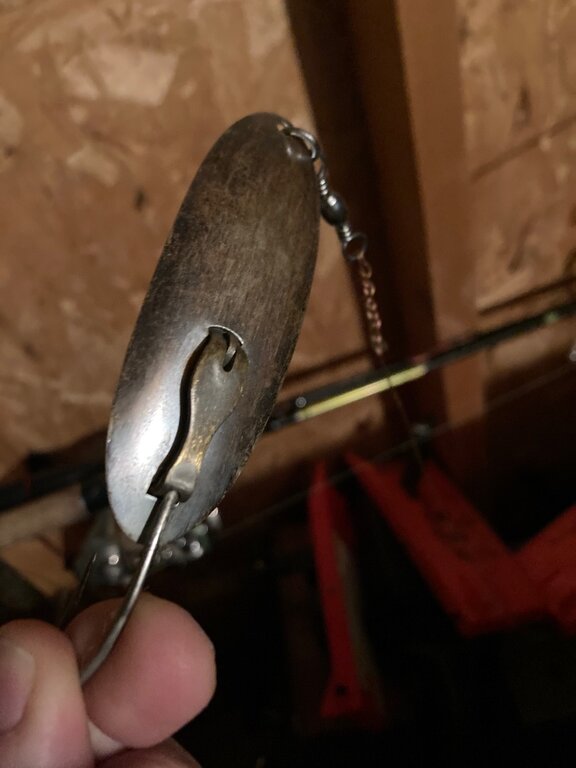-
Posts
13,806 -
Joined
-
Last visited
Content Type
Profiles
Forums
Events
Gallery
Store
Everything posted by Sk8man
-
Seems like a simple question at the outset but actually the answer can be quite complicated. Seneca and many of the Finger Lakes have a very different bottom structure than say much of Lake Ontario that is more like a basin. Seneca has a very diversified bottom both in terms of consistency (e.g. silt, weed growth, cobble, and rocks and sharp drop offs and outcroppings and pronounced points jutting out from shore where it comes up radically in a short distance. You can be trolling in deep water and then abruptly come up into shallow water. what this means is that you have to be constantly monitoring your down rigger position and the bottom itself and making adjustments to the rigger. It is very easy (and common) to get the weights hung up on bottom when your attention drifts sometimes even momentarily. If it is a soft or mud bottom you may be able to retrieve the weights without much problem but in rocky or even cobble areas they can hang up so no matter what you do have the drag on the rigger set so that it can slip out if it hangs up. I once saw a guy in front of Sampson get hung up and it rips part of his gunwale out (fiberglass hull) and the downrigger went to the bottom. Another factor to consider is what you intend to run behind the weight and how far behind it. Running cowbells near bottom you need to run them short to the weight to prevent hangups while spoons can be run further behind. Some folks have riggers that can track the bottom and this can be deadly but still requires close monitoring and care. I seldom run closer than 5-8 ft from bottom on Seneca and I know the lake like the back of my hand or I wouldn't run that close. Blowback is another thing to consider as you can be further off bottom than you think and strong currents on Seneca can also get you into trouble if not watching intensely as there are cross currents and switching currents that can all of a sudden make the weight go closer to bottom than you had been when running with it. Some folks actually purposely bounce the weight of the bottom itself to attract lakers and it can be effective but also costly. I know this is probably more than you asked for but there are a lot of weights of various types on the bottom of Seneca
-
It is called Accustrand (Made by Cablestrand Corp.) and it works fine. I have used it for years. I think Emptystringer sells it here.
-
-
So sorry Cornelis. Life is very precious and sometimes we either forget that or take it for granted. Relationships are everything in life. May she rest in peace and you find peace as well.
-
-
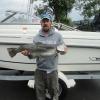
Cayuga Fishing South End of Cayuga lake in Novemeber/December
Sk8man replied to Girocks's topic in Finger Lakes Discussion
This time of year you won't be finding live sawbellies in any bait shops......they are out in very deep water at this time of year. Golden Shiners may be available though and they hold up better anyway. The Northern Pike also favor them though so fishing from shore on Cayuga you may encounter them as well. Get the largest shiners you can. Another possibility is frozen sawbellies or frozen smelt if you can find them, or as a last resort using the commercial shad (in jars or packages) sold in tackle shops or Walmart or Running's for example. When fishing with dead bait cast out as far as you can, let the bait hit bottom, take up the slack and let it sit for a while. Occasionally move the bait a foot or two and set the pole back down and continue this tactic, and repeat. -
I'm with Gator. It also is pretty discouraging that none of the companies that have polluted the environment have been truly held accountable. At most with the most agregious stuff they are given a miniscule fine at best (when or if reported or litigated) and then it's "business as usual" and over time all these dangerous toxins have continued to be emitted into the environment (air and water, land etc.) The governmental agencies involved at both the state and federal level have most often turned a blind eye for various self-serving reasons and the public supporting them has been the victims. Some of it is incompetence and some appears as corruption and graft and anytime you get money attached to something it tends to corrupt the public interest anyway. The fisaco on Seneca Lake with bit coin mining is a prime example of both incompetence by a state agency and the money behind a environmental problem corrupting the process. We also have to wonder how many more "time bombs" we are unwittingly sitting on.
-
I'm no expert on this and it is a serious matter but one thing in addition to what Frogger mentioned is the way in which a fish is filleted and prepared. I have always filleted my fish no matter what species or fresh or salt water variety. They are filleted such that all visible fat areas are eliminated from the fillet which means staying away from the back and belly areas, carving out any grey matter (mid line). Yes you don't get all the flesh but you do reduce the contaminants. The second thing is I either bake or air fry nearly all of my fish. Although I love deep fried fish (or chicken or anything else) I avoid it cooking fish this way. The oil may concentrate chemicals or contaminants. Most of the fish I eat these days are perch so hopefully the contaminants will be minimized given the size of the fillets. I catch and release trout and salmon these days for a variety of reasons.
-

Out with 2022, 12/30 & In with 2023, 1/8 on Cayuga
Sk8man replied to Reel Doc's topic in Finger Lakes Discussion
-

NLT Derby transcient dock Seneca lake resorts...{sampson]
Sk8man replied to Fishstix's topic in Finger Lakes Discussion
-

NLT Derby transcient dock Seneca lake resorts...{sampson]
Sk8man replied to Fishstix's topic in Finger Lakes Discussion
Ah ok thanks....yeah I don't do social media other than here -
Not trying to crimp your thinking but more is not always better. You can run quite a few lines on a wide 20 footer ad I have run 9 on my wide 18 ft and on the Finger Lakes you can usually get away with it but on Lake O when you have 8 lines and four of them long ...even on boards an unruly Chinook or big steelie can make a mess of things in a hurry and then you spend valuable fishing time straightening out and re-rigging. Usually it is more productive running fewer lines but setting them right according to the location of bait, fish. position of thermocline, and conditions.
-
Two downriggers and two dipseys as the others have said and consider the Deeper Divers for a larger depth range. In the Spring and Fall when in the shallows the small dipseys can be really effective as well as slide divers. Hardly anyone seems to mention it anymore but toplining can be effective as well with lines run 100-200 ft behind the boat with small amount of weight or if stickbaits used one or two large splitshot about 3-4 ft above the lure (also helps keep weeds off the lure). Sometimes just one topline added to the mix up the chute and well away from the boat and other stuff works. "Old school" approaches but they still work.
-

Sold / Closed Tackle box and 200 Trolling spoons
Sk8man replied to rod hog's topic in Classifieds - Buy, Sell, Trade or Rent
-

NLT Derby transcient dock Seneca lake resorts...{sampson]
Sk8man replied to Fishstix's topic in Finger Lakes Discussion
Hoping we here something about whether the Trout Derby will be held this year. -

Revitalization of a wonderful "oldtime" lure
Sk8man replied to Sk8man's topic in Open Lake Discussion
-

What is the name of this lure and which fish does it catch
Sk8man replied to maisie's topic in Open Lake Discussion
-

Revitalization of a wonderful "oldtime" lure
Sk8man replied to Sk8man's topic in Open Lake Discussion
-

Revitalization of a wonderful "oldtime" lure
Sk8man replied to Sk8man's topic in Open Lake Discussion
You have done a great job of bringing those spoons back Pete and I know a lot of Finger Lakes folks will be happy once they start using them. Unlike a lot of today's spoons these were designed right on the Finger Lakes and that plating can make a big difference as they can be seen for greater distances under water. -

What is the name of this lure and which fish does it catch
Sk8man replied to maisie's topic in Open Lake Discussion
-

What is the name of this lure and which fish does it catch
Sk8man replied to maisie's topic in Open Lake Discussion
-

What is the name of this lure and which fish does it catch
Sk8man replied to maisie's topic in Open Lake Discussion
-
Some of the decision may reside in how deep you intend to be trolling and what you will be running behind them. The #5's will create more turbulence down real deep and might be best if running bait behind them. Either size will work though and both will work fine with wobble trolls or peanuts or spoons. The 5's create a little more resistance than 4's but as long as they are the Hammerhead type not that different. The older metal ones offer significantly more resistance and are harder to reel in.
- 1 reply
-
- 1
-

-

What is the name of this lure and which fish does it catch
Sk8man replied to maisie's topic in Open Lake Discussion
-

What is the name of this lure and which fish does it catch
Sk8man replied to maisie's topic in Open Lake Discussion
There are different versions of the Johnson Silver Minnow and I also think the one on the right is one. Hard to tell from the orientation in the pic about the one on the left as it is on its side. They are BOTH however for jerking copper wire in their application. The position of the fixed hook indicates that as it is positioned downward so that the top actually drags along the bottom while the hook points upward when trolled (slowly) and both lures are used this way to aid in catching fish but also to avoid snagging bottom. Those types of spoons have been used for years on many of the Finger Lakes including Seneca mainly for Lake Trout fishing.


